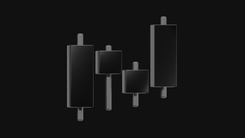- Wallet
- Coinhold 14% APY
- P2P No fee
- Mining
- Referrals
- About
- Help center
- Support
- FAQ
- Support
- For business
Proof of Work vs. Proof of Stake: Which One Affects You More?
If you’re into cryptocurrencies, you’ve probably come across the terms PoW and PoS. These are the two primary ways to validate transactions and secure blockchains. Bitcoin uses the Proof of Work model, while Ethereum switched to Proof of Stake with its Ethereum 2.0 upgrade.
In this article, we’ll dive into the differences between PoW and PoS, how they affect security, the environment, and your profits and most importantly, which one you should choose as an everyday user.
What’s Proof of Work?
Proof of Work (PoW) is a system where thousands of computers worldwide solve complex mathematical puzzles to add a new block to the blockchain. The first to solve the puzzle gets a reward — new coins and transaction fees.
This is how Bitcoin has been operating since 2009. It’s simple and reliable: to attack the network, you’d need an enormous amount of computing power, which is both expensive and difficult to achieve.
Let’s break down the Proof of Work advantages and drawbacks:
| PoW Pros | PoW Cons |
| High security | High energy consumption |
| Decentralization through physical hardware | Dependence on mining pools |
| Long history of reliable operation | Need for expensive equipment |
What’s Proof of Stake?
Proof of Stake (PoS) works differently. Instead of solving puzzles, you lock (stake) your tokens in the network. The more tokens you have staked, the higher your chances of getting to add the next block and earn a reward.
For example, with Ethereum 2.0, you need to stake at least 32 ETH to participate directly.
Let’s take a look at the Proof of Stake pros and cons:
| PoS Pros | PoS Cons |
| Energy-efficient | Larger token holders have more power |
| No need for expensive hardware | Risk of staking provider hacks |
| Passive income via staking | Newer model, not as battle-tested as PoW |
How PoW and PoS Affect Your Crypto Experience
For an average user, the key focus isn’t on technical details, but on how these consensus mechanisms affect your actual experience.
The main differences between Proof of Work and Proof of Stake lie in participation methods, costs, and earning potential. Let’s compare them from a user’s perspective:
| Criteria | Proof of Work | Proof of Stake |
| Participation | Mining | Staking |
| Investment | Equipment, electricity | Tokens |
| Risks | Equipment breakdown, difficulty increases, market volatility | Token volatility, locked funds |
| Profits | BTC or other PoW coins | Token rewards for staking |
If you want to be the Bitcoin network part and earn rewards for the real work of computing devices, mining is your go-to. If you prefer to hold assets and earn income by participating, staking might suit you better.
Which is More Secure and Decentralized?
Proof of Work is a time-tested mechanism. Bitcoin has been running since 2009 without issues, and to attack it, you’d need an immense amount of computing resources. By distributing hashrate across thousands of independent miners globally, PoW ensures a high decentralization and resilience level.
Proof of Stake is a newer model. It’s more energy-efficient and simpler to use but carries the risk of centralization: the more tokens a participant holds, the greater their influence on the network. This can lead to power being concentrated in the hands of large validators, potentially making the network vulnerable to collusion or manipulation.
If maximum reliability and resistance to censorship matter to you, PoW might be the better option. If you’re prioritizing yield, convenience, and a lower barrier to entry, PoS could be a better fit.
How to Choose: Quick and Practical Guide
Choosing between Proof of Work and Proof of Stake depends on your goals, technical capabilities, and risk appetite. Here are some key points to help you decide:
- If you trust Bitcoin and want stability and a proven model, go for PoW and mining
- If you’re actively involved in Ethereum, Solana, Aptos, or other L1 ecosystems, PoS and staking will feel more natural
- If you want to earn income but aren’t ready to buy tokens on the open market, mining is a smart choice
- If you prefer convenience, automation, and minimal technical setup, staking through a reliable provider is the way to go
If you choose Proof of Work as a more secure and decentralized model, mining is your logical next step. Not only does it support the network, but it also provides a real opportunity to earn BTC.
Starting is easier than you might think. With EMCD Mining Pool, you’ll have access to one of the largest mining infrastructures:
- Top 10 global mining pools
- Over 35 000 active miners
- More than 30 000 BTC mined
- 12 algorithms and coins supported
- Transparent statistics, BTC payouts, low fees
- User-friendly interface and support in English
Setup is simple: connect your hardware, choose your coin, and start mining. No complicated hurdles. With EMCD, you’ll maximize your profits and become part of a robust network that supports Bitcoin.
PoW and PoS are two paths to decentralization. Choose the one that resonates with you, and start using crypto not just as an investment but as a tool for the future.




